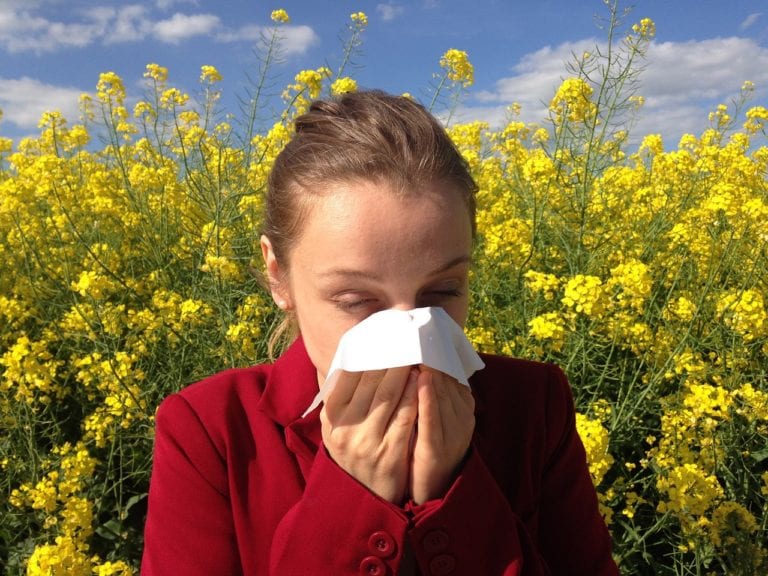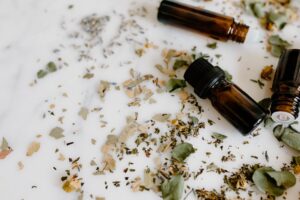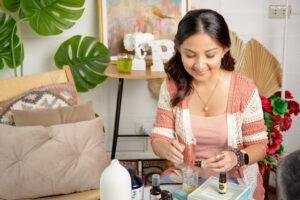So, I had this discussion in our small Facebook group, Lana Lane, where I asked what certain health support or concerns do most of us wish the oils to complement/address. Quite surprisingly, (and this was one of my initial concerns, too), allergic rhinitis was on top of the list.
I find it worrisome that there’s a lot of us who are getting allergies. So I took the liberty to interview one of the angels of my rainbow babies, Dr. Carol Gloria, allergist and immunologist about the Western perspective on allergic rhinitis.
1. What is allergic rhinitis?
Dr. CG: Allergic rhinitis is a diagnosis associated with a group of symptoms affecting the nose. These symptoms occur when you breathe in something you are allergic to, such as dust, animal dander, or pollen or even food.
Symptoms that occur shortly after you come into contact with the substance you are allergic to may include:
Itchy nose, mouth, eyes, throat, skin, or any area
Problems with smell
Runny nose
Sneezing
Watery eyes
Symptoms that may develop later include:
Stuffy nose (nasal congestion)
Coughing
Clogged ears and decreased sense of smell
Sore throat
Dark circles under the eyes
Puffiness under the eyes
Fatigue and irritability
Headache
2. What are the triggers?
Dr. CG: An allergen is something that triggers an allergy. When a person with allergic rhinitis breathes in an allergen.
Outdoor allergens, such as pollens from grass, trees and weeds
Indoor allergens, such as pet hair or dander, dust mites and mold
Irritants, such as cigarette smoke, perfume, air fresheners and diesel exhaust
3. What can one do to lessen attacks?
Dr. CG: Avoidance of what you are allergic to is the key. However, it’s difficult to completely avoid potential allergens, but you can take steps to reduce exposure to a particular allergen you know or suspect is triggering your allergic rhinitis. This will help improve your symptoms.
Medicines given for mild to severe rhinitis include: antihistamines, corticosteroid nasal spray, anti leukotrienes and decongestants. Your doctor prescribes them for you with the proper instructions on how and when to take them.
4. When to consult an allergist?
Dr. CG: You should see an allergist if:
Your allergies are causing symptoms such as chronic sinus infections, nasal congestion or difficulty breathing.
You experience rhinitis or other allergy symptoms several months out of the year.
Antihistamines and over-the-counter medications do not control your allergy symptoms or create unacceptable side effects, such as drowsiness.
Your allergies are interfering with your ability to carry on day-to-day activities.
Your allergies decrease the quality of your life.
5. Any helpful home remedies like Zita West’s article on natural immunotherapy?
Dr. CG: Probiotics are a useful therapeutic remedy in the treatment of allergic rhinitis, but its underlying mechanisms remain to be further investigated.
Will research more on alternative treatment – but not a lot of convincing reports from reliable sources kasi.
☆☆☆
To get in touch with Dr. Carol Gloria for any of your allergy concerns, she holds clinic at Asian Hospital. Her secretary’s number is 09989548327. She is an amazing doctor who we love so much as she was instrumental to us having Santi and Lucia.
☆☆☆
I am soo happy that Doc Carol indulged me with my request just so we can understand better what this condition is all about.
Now I want to integrate this information with what I am currently studying. In my opinion, removal of triggers is really key as she mentioned.
Personally, there are just so many possible irritants in our homes – air fresheners, fabric softeners, etcetera.
In one article published by American College of Allergy, Asthma and Immunology, it says:
Home fragrances, usually in the form of air fresheners and scented candles can trigger allergy symptoms or exacerbate existing allergies and cause more severe asthma attacks.
When I was younger, I loved synthetic fragrances, scented candles and the like. While I did not have severe allergy symptoms, I know that this somehow contributed to my autoimmune disorder along with a very stressful, type A lifestyle, vices and unhealthy food intake.
I personally believe that slowly getting rid of these irritants in our homes is the nudge we need to start a healthier environment that will be beneficial for the whole family. Being mindful of what we are exposed to daily is a small start. I haven’t done an overhaul yet of these chemicals in our household and throwing them out but that is definitely on top of my New Year’s list.
Why?
Because I am particularly concerned of taking the load off my children’s immune system and overall health by limiting their exposure to anything synthetic (I don’t want them to acquire autoimmune disorder in the future!). I honestly believe that my repro-immune disorder was caused by lifestyle choices and I hope to redirect my kids to another direction.
Don’t get me wrong. I am not going all hippie on you. I still am and always will be relying on my trusted doctors as medical advice is not something that can be substituted by anything. When Santi has his attacks (and they have been very rare nowadays), I still give him his antihistamine. But diffusing essential oils that eased congestion helped, too!
I truly believe that we can revamp our lifestyle to support ourselves holistically. As they say, prevention is always, always better than cure.
This is the reason why I am currently getting certified as an aromatherapist — because I want to learn deeply about oils so I can help my family and other people in a more holistic and natural way.
In my course, I am slowly learning how to incorporate the use of essential oils in my daily life such as creating cleaning products that can replace synthetic ones.
Today, I want to share with you one of the things I learned. This recipe is an evidence-based recommendation (meaning, it has scientific backup) and is so easy to make – and the best takeaway is that you know exactly what is inside the recipe because you are the one who made it!
This is the cleaning spray recipe —
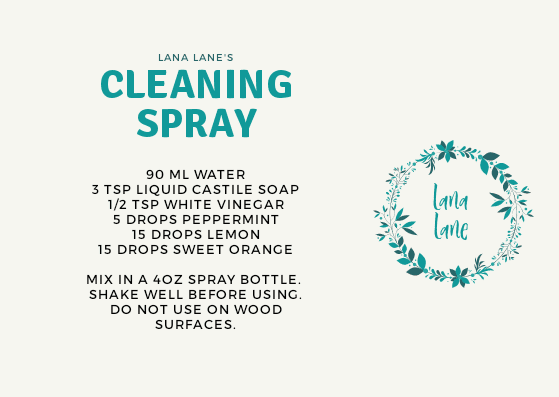
And this is what I made. I just multiplied the recipe to make a 300mL bottle.
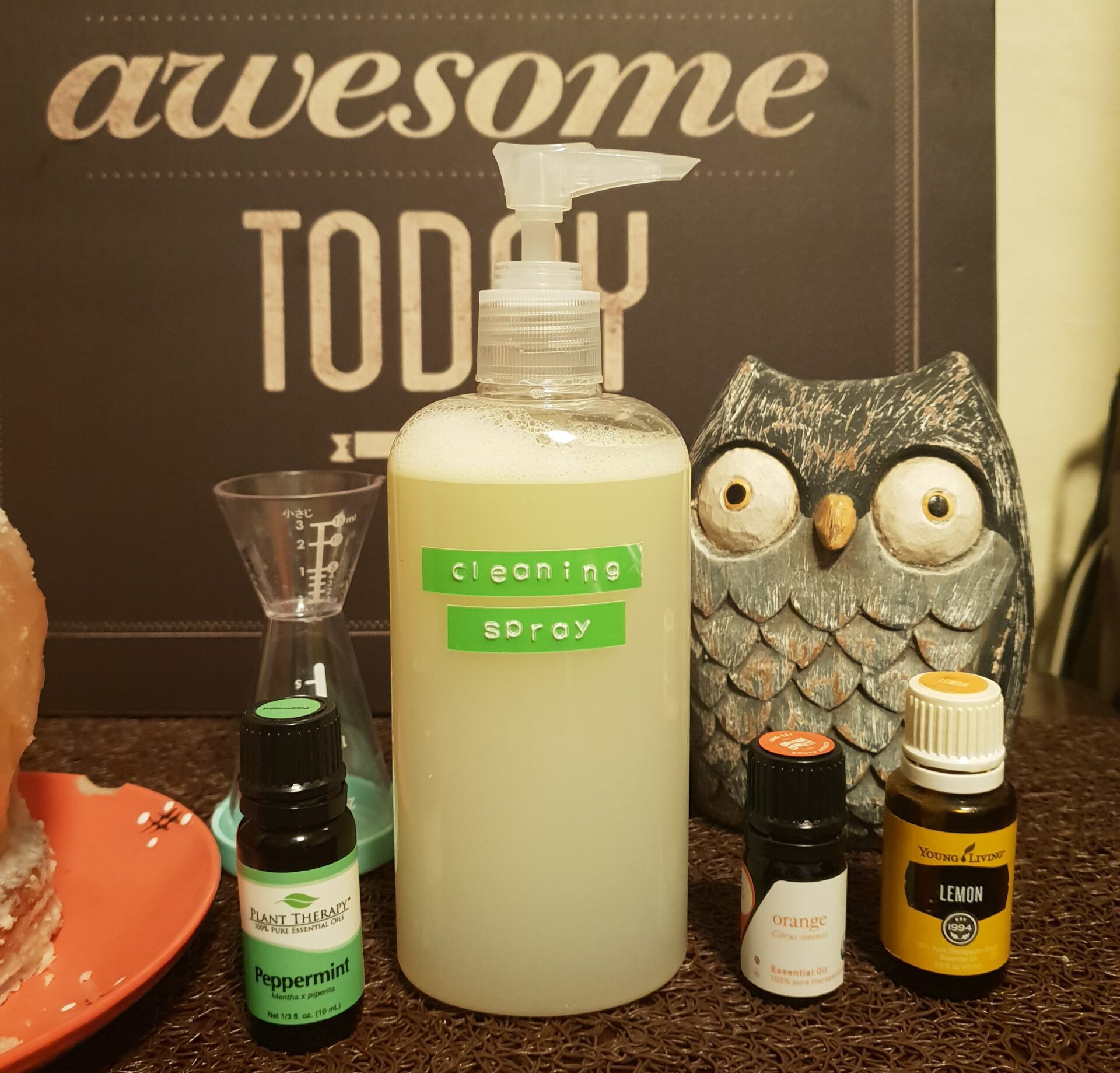
If you want to know why these oils were chosen and if you want to learn more about essential oils regardless of the brand you are using, hop on to Lana Lane. I will also share some other recipes for blends there in the next few days.
Let’s create a movement for a more educated and mindful use of essential oils.
See you there!
Light and love,
Balot
P.S. I am not a distributor of any direct marketing brand of essential oils anymore. My wish is to study about these oils and share with you different brands I have personally used so that you can make an informed decision.
